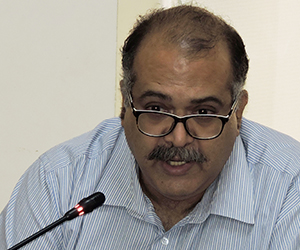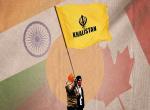The portents of the Taliban strike against Camp Bastion in Helmand earlier this month are rather depressing and disheartening. Despite the brave face being put on by the NATO commanders, the devastating attack raises serious questions about the viability and sustainability of not only the exit strategy devised by the Americans but also their purported plan to retain some bases in a supporting role post 2014. The recent spate of attacks on NATO targets – Camp Bastion, the suicide bombing of a bus carrying Westerners to the airport, the damage caused to the aircraft of the US Chairman Joint Chiefs of Staff Committee at Bagram, the series of ‘green-on-blue’ attacks, targeted assassinations and what have you – have instilled a deep sense of foreboding both within Afghanistan and without.
Confidence in the ability of the current dispensation in Afghanistan to hold fast against the Taliban / Al Qaeda combine after the exit of the ISAF was never very strong. After the Camp Bastion attack, it would have been badly shaken, if not completely shattered. With nothing on the ground to reverse the sentiment of gloom and doom, chances are that the main players would have already started to prepare for the post-2014 situation. Some would be opening their channels of communication with the Taliban, others preparing for a fight to the finish against them and still others hedging their bets in all directions. In the process, the authority of the government, or whatever remains of it, would get severely compromised, making it even more difficult to maintain a modicum of stability once the foreign forces withdraw substantially.
Tempting as it would be to underplay the attack on Camp Bastion – after all, this wasn’t the first time that an ISAF base had been attacked – the simple fact is that the ferocity of the attack, the meticulous planning and flawless execution, and most of all the damage it caused (both material as well as psychological) makes it something of a game-changer. Coupled with the growing chasm between the foreign and local troops because of the spike in ‘green-on-blue’ attacks, manifest in the suspension of joint operations and training of troops, the Camp Bastion attack has put a big question mark over the efficacy, and indeed practicability, of the post-2014 strategy of the Americans.
By all accounts, the US strategy, as things stand, is that while the bulk of the troops will withdraw by the end of 2014, a small force – the numbers being bandied about range between 10000 and 35000 – will stay behind in a support and training role. Three to five bases are likely to be retained by the Americans in Afghanistan to house these troops and mount both ‘search and destroy’ as well as rescue missions. While the Afghan national security forces will be handed over security responsibilities, the Americans will be there to back them until the situation stabilises. Clearly, this is hardly a confidence inspiring strategy and, if anything, it is going to be unworkable. To put it simply, the only real choice before the Americans is to either comprehensively defeat the Taliban, their associates, proxies and supporters, or else cut and run from Afghanistan. Anything else will be a halfway house that is never going to work.
As the drawdown takes place, a security vacuum will be created. Although the ANSF will try and fill this vacuum, it is unlikely to have a good grip over the security situation. The Taliban are expected to make major inroads and hold sway (even if informally) over large swathes of territory, particularly in the South and East of Afghanistan. What is more, there are real apprehensions that the Taliban or their associates and affiliates could extend their baleful influence – either through force of arms or through imaginative use of psychological warfare to convince the local people to side with them as they are bound to emerge victors eventually – in parts of Afghanistan which currently are relatively unaffected by the insurgency.
Expecting the relatively small numbers of US troops to be able to stall such advances by the Taliban, who will also have the advantage of momentum and morale on their side, is not very realistic. This is not to say that the Taliban will sweep through Afghanistan. Chances are that there will be many more bloody engagements between the combatants and while there will be no clear victor after these engagements, they will end up exhausting both the Afghan regime as well as their American supporters.
What is worse, the Americans will be largely confined to their bases, practically under siege from hostiles in the surrounding countryside and extremely wary of their Afghan colleagues because of the ‘green on blue’ attacks. In such a situation, will not the US troops be more engrossed in securing their base and their backs rather than in targeting the Taliban or training and supporting the ANSF? And after the Camp Bastion attack, how secure will these bases be? How will these bases maintain their logistics lines? Will they be supplied only by air because the land routes will be extremely vulnerable to attacks by the insurgents? Will these bases only send out airborne patrols because ground patrols, if any, will be subjected to unremitting attacks? What will happen if the Taliban are able to mount a couple of devastating Camp Bastion type attacks on these bases, extracting a heavy price in men and material? Will not the continued US troops presence in Afghanistan become financially, militarily and politically untenable in such a scenario?
Currently, ballpark estimates of cost of maintaining a single soldier in Afghanistan is $ 1 million per annum. If around 10000 troops are retained in Afghanistan post 2014, it will mean an annual expenditure of around $ 10 billion. A force of around 25000 will entail a cost of $ 25 billion. How long will be the US continue to bear this expenditure? Until 2024? Appears unlikely. What is more likely is that once the bulk of the force is withdrawn, and the security situation takes a turn for the worse, there will be a growing clamour in the US to call back rest of the forces and figure out some other way to contain the Taliban and other Islamist radical groups that are bound to make Afghanistan their base.
Apart from the financial burden, continued presence in Afghanistan will also make the US hostage to Pakistan. While the dependence on Pakistan for ground lines of communication (GLOC) will reduce drastically because these would have probably become un-useable since they will be passing through Taliban dominated areas, the Pakistani airspace will remain crucial for the US military in Afghanistan. And if it is not Pakistan, then the US will remain hostage to all sorts of political, financial and diplomatic arm-twisting by the countries through which the Northern Distribution Network operates.
Quite clearly, the US exit strategy has gaping holes insofar as the future security scenario in Afghanistan is concerned. Although the military commanders are insisting on staying the course and the American politicians are emphatic about not abandoning Afghanistan, once things start going horribly wrong, none of these commitments will be worth the paper they are written on. The military bases that US intends to retain fit in well into the exit strategy only to the extent that they will allow for an orderly retreat as and when the time comes to throw in the towel. Perhaps the Americans have learnt the lesson from the British to not announce a complete withdrawal because that would mean that the next day there won’t be a single Afghan left on their side. By withdrawing to their bases, a strong signal will be conveyed that the Americans are here to stay for the foreseeable future, something that will keep many Afghans on their side and at the same time allow for bulk of the forces to exit. Once they are in their bases, they will be better places to leave lock, stock and barrel as and when the time for doing this comes.
Of course, quitting Afghanistan will not mean the end of the US fight against radical Islamists. Nor will it mean turning the back on the anti-Taliban Afghans. But instead of boots on the ground or bombs from the air, the Americans will probably devise a somewhat smarter and perhaps more effective strategy to support anti-Taliban and anti-radical groups in Afghanistan and around the Islamic world.
Published Date: 28th September 2012










Post new comment